White House announces delegation for Alaska talks with Russia – Reuters
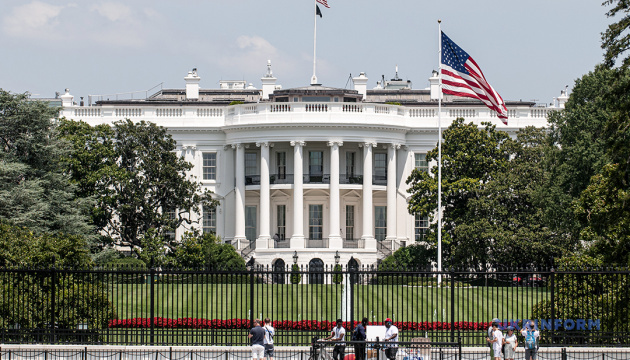


Euromaidan Press spoke with Anton Shekhovtsov, a political scientist specializing in Russian extremism and editor of “Russia Against Ukraine: Russian Political Mythology and the War on Ukrainian Identity.” The book brings together thirteen authors — almost half of them Russian — analyzing anti-Ukrainian narratives in Russian society, revealing the ideological foundations behind Russia’s war.
This interview has been edited for length and clarity.
EUROMAIDAN PRESS: Several chapters in your book deal with genocide rhetoric. What are the most dangerous narratives, and how do they translate into real-life actions?
SHEKHOVTSOV: All authors in this collection who suggest that what Russia is doing is genocide or attempted genocide of the Ukrainian nation — me included — refer to the international definition of genocide adopted by international institutions.
Some Russian officials do not even deny that they are aiming at the genocide of Ukrainians.
They feel that they cannot be punished, not only for what they’re doing but also for what they’re saying. This creates the atmosphere where Russian soldiers, if not directly instructed to kill civilians and engage in acts of genocide, still feel that whatever they do to Ukrainians is fine, that it is normal. You can kill civilians, you can bomb civilians, you can kill children.
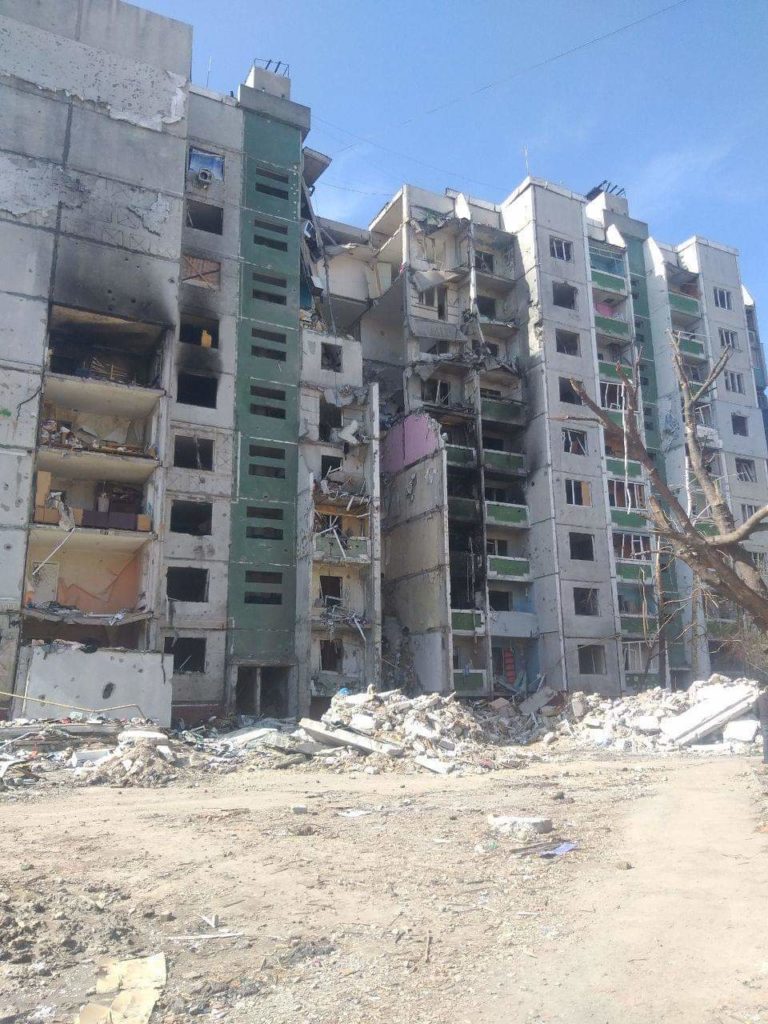
But I feel that it is not just some individual officers and soldiers going crazy and killing everybody they see. I think it is a strategy. When Putin says essentially that Ukraine does not exist, the Ukrainian nation does not exist — what he means is that they should not exist. And the only way for them not to exist is to kill them or to drive them from their territories.
Putin is quite fine if Ukrainians simply leave Ukraine. He is not going to kill Ukrainians in the EU.
He’s fine with Ukrainians becoming an ethnic minority in a particular EU country. But Ukrainians should not have their own Ukrainian nation-state.
Today’s assault is unprecedented in Ukrainian history, as it targets Ukrainian statehood itself — the very idea that Ukrainians can exist as a sovereign people.
EUROMAIDAN PRESS: You have a whole chapter dedicated to Nikolai Patrushev and the siloviki. What drives their worldview, and why are they the harshest Ukrainophobes?
SHEKHOVTSOV: The siloviki are representatives of the power ministries, power agencies, or intelligence agencies—the entire security apparatus, defense, and police. Those people who have power are the harshest Ukrainophobes because they share a worldview that they already formed in the Soviet Union.
These people were born in the Soviet Union and, more importantly, socialized in the Soviet Union, some even during the Cold War. They have a very security-focused view on geopolitics, specifically on how dangerous it is for Ukraine to be an independent state.
There is a combination of this mythological view — I wouldn’t even call it ideology; it’s a mythological worldview — where everything is divided between evil and good. If everything about Russia is good, and if something they consider to be undermining Russian interests is bad, this is evil. They have a black-and-white picture of the entire world.
If Ukraine wants to remain an independent state, siloviki automatically consider this as an evil act, and can basically justify morally, even ethically, that they can do whatever they want against evil.
So they are demonizing Ukraine. And this is one of the major explanations why it’s not simply an occupation that Russia is striving for, but an actual genocide, an actual destruction of the Ukrainian nation. Not just the occupation, but the destruction.
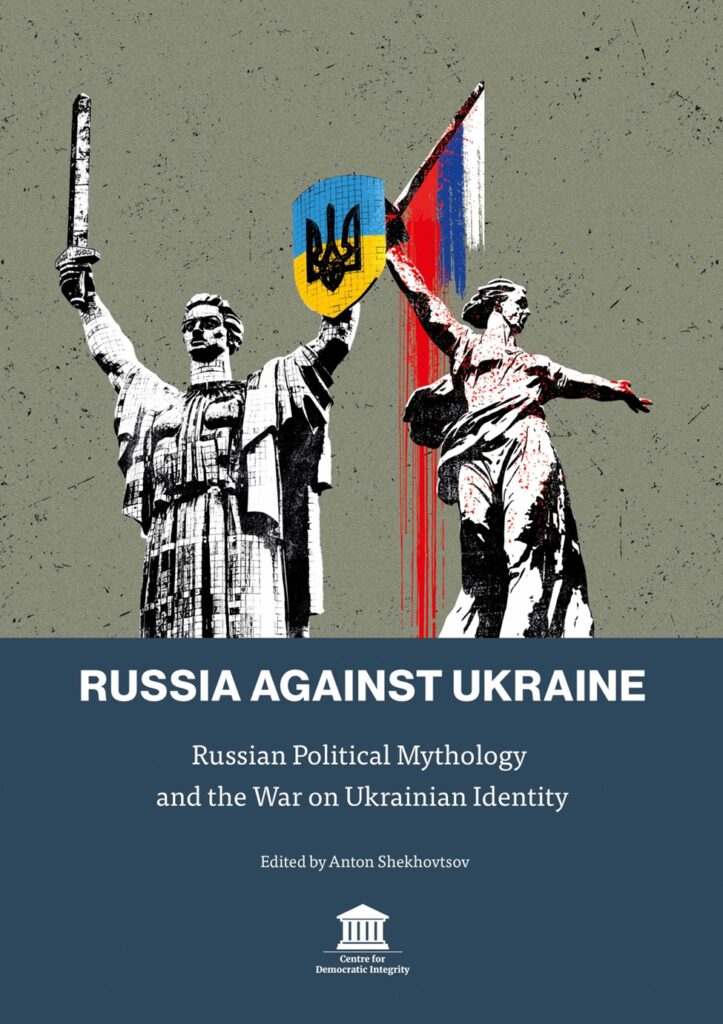
EUROMAIDAN PRESS: Where do these deep roots of Ukrainophobia come from, and how are they connected to the Kremlin’s politics today?
SHEKHOVTSOV: The roots of anti-Ukrainian sentiment go back to at least the 19th century in the Russian Empire. The authors were writing about the distinction between the two types of Ukrainians.
One type is those Ukrainians who have ethnic roots in the Ukrainian cultural group but were very well integrated into the Russian Empire. They were ethnically Ukrainian, but at the same time, they were really part of the Russian Empire. They were Russified, belonging to the empire and not to their own Ukrainian ethno-cultural community.
At the same time, there was another type of Ukrainian. Those were mostly people living in Ukrainian villages. They would speak Ukrainian, and they were considered by the Russian imperial elites as poor, very poorly educated people who should be ruled. They obviously could not have their own state because it was ridiculous. This distinction actually survived the Russian Empire.
Even in the Soviet Union, the Russian Soviet elite distinguished between two types of Ukrainians.
One type is the Soviet Ukrainian, like a Ukrainian communist. This is a good Ukrainian integrated into the Soviet empire. And there was another, the bad Ukrainian — a Ukrainian who wanted to have an independent Ukrainian state, an independent Ukrainian nation. And they were all demonized as Banderites.
EUROMAIDAN PRESS: So the enemy is not the alien one but the one who is very similar but doesn’t want to be us?
SHEKHOVTSOV: Exactly. The Ukrainophobia also stems from the worldview that Ukrainians are not really different from Russians. This is just one branch of the larger Russian tree. There are Greater Russians, Little Russians, and then White Russians. And those who do not agree to that are the enemies. These are bad Ukrainians.
For Putin, he saw these types of Ukrainians. Ukrainians were in the KGB. They were his colleagues. They were not that different from him. Maybe some accents or Ukrainian family names would demonstrate that they were coming from the Ukrainian ethnic cultural group. But the bad Ukrainians, those who said, “No, we are different. We have our own culture, we deserve to have our own nation-state.” Putin’s reaction, not only Putin’s but that of Russian ultra-nationalists, is that you are destroying our Russian nation. You are the separatists.
This explains why Russia expected Ukrainians to welcome their “liberation” in 2022.
The Kremlin genuinely believed that most Ukrainians were still “good Ukrainians” who would reject their democratically elected government. Instead, they encountered a nation that had definitively moved beyond imperial categories.
EUROMAIDAN PRESS: How does this compare to what ordinary Russians think, as opposed to the elites?
SHEKHOVTSOV: What’s interesting is that there is a difference between the annexation of Crimea and the full-scale invasion of Ukraine. Crimea has existed in Russian mythology since the 1990s. The romantic vision that Crimea was somehow lost by the Russians and should return to Russia was there. However, there was no romantic vision among Russians that Belarus should be part of Russia.
There was no social demand for the full-scale invasion.
Russian people — I’m not talking about the elite — there was no request from their side to Putin to start the full-scale invasion of Ukraine. There was no demand for genocide.
There were, of course, these crazy Russian fascists and Russian ultra-nationalists who hated Ukrainians and Ukraine. But for ordinary Russians, while they were really happy with returning Crimea to Russia, the full-scale invasion was still something completely different. It was driven by the elites, driven by a significant part of the Russian elites, but not the ordinary people.

In that sense, the war serves the psychological needs of Russia’s security apparatus more than any popular mandate, making it both more dangerous and potentially more fragile than grassroots nationalism.
EUROMAIDAN PRESS: Is this a modern way of thinking, or has Putin gone back to very old patterns?
SHEKHOVTSOV: I think it’s a radicalization of the old patterns, but this radicalization itself is very modern. I don’t really remember such a genocidal drive of the Russians towards Ukrainians. Of course, there was the Holodomor in the 1930s. However, the Holodomor targeted only one part of the Ukrainian nation — people mostly living in villages and smaller towns.
But today, these genocidal aspects of the anti-Ukraine Ukrainophobia have been radicalized.
Even if we look at the short history of the Ukrainian People’s Republic in the 1920s, which the Red Army occupied in collaboration with Ukrainian communists, it still remained Ukraine. It was Soviet Ukraine, but Ukraine.
But this attack, this aggression against the Ukrainian national identity, is pretty much unique in history. So it is a radicalization of older patterns.
EUROMAIDAN PRESS: Can you end on a more positive note? What can we take away from this research?
SHEKHOVTSOV: I think the positive aspect of what is happening today is that there is very little chance that Russia indeed succeeds in the destruction of the Ukrainian state and the Ukrainian nation. If we look at the history of the Ukrainian nation, Ukrainians were either unable to defend themselves or were always outnumbered, outsmarted by the Russians, and also by Russian military technology.
Never in its history has the Ukrainian national project received such huge support from Europe and the West in general.
Ukraine has never experienced anything like this, and never has such solidarity been present with Ukraine as it is today. Unfortunately, solidarity has eroded somewhat in countries close to Ukraine, like Hungary, Slovakia, and even Poland. Still, the degree of support for Ukraine is the largest in its history.
The book’s findings suggest that understanding Russian Ukrainophobia is crucial for Western policy. These aren’t temporary political grievances that can be negotiated away, but deep-seated imperial reflexes that view Ukrainian independence as an existential threat to Russian identity. Recognizing this helps explain why compromise often fails and why supporting Ukrainian victory serves broader democratic security.
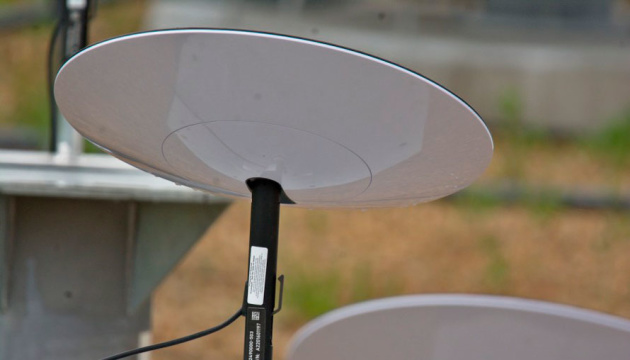
Kyiv says it struck the Syzran oil refinery and Caspian Sea port of Olya in separate attacks

© REUTERS
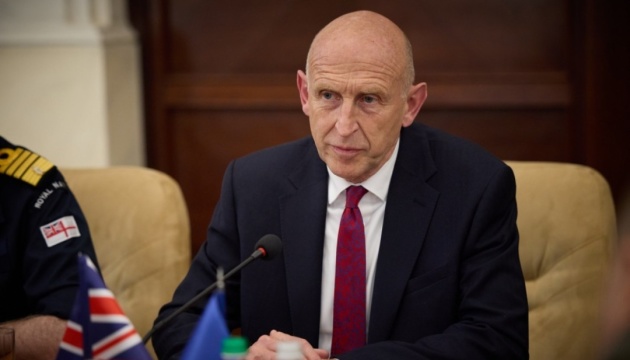
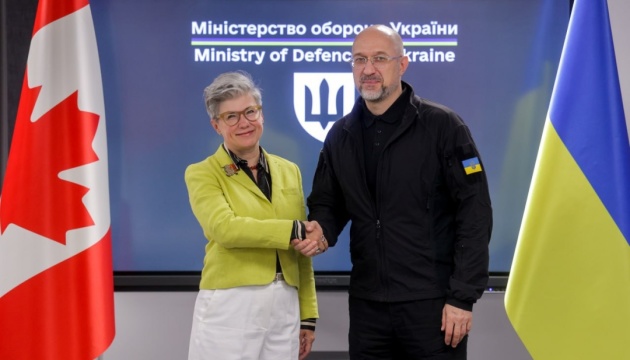
Ukrainian civilians who have been held captive in Russia since 2014 have been released as part of a huge exchange, Volodymyr Zelensky has said.

© Volodymyr Zelensky
Putin’s aggression on the Ukrainian frontline has stepped up in the recent weeks, leaving locals with little choice but to flee west. Harry Stourton reports from the eastern town of Dobropillia

© Harry Stourton
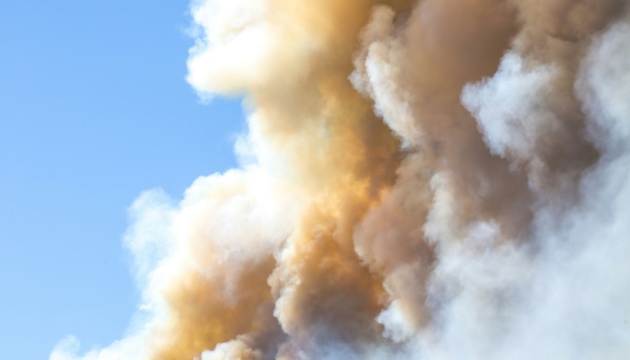
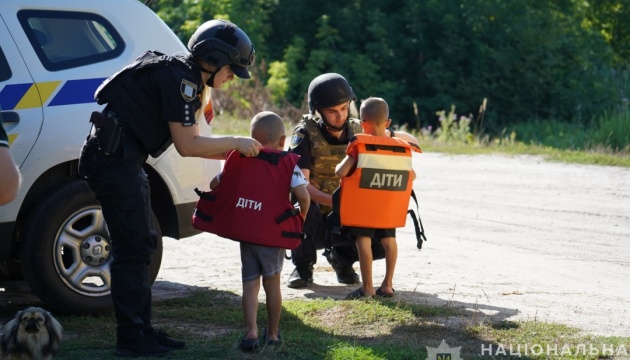
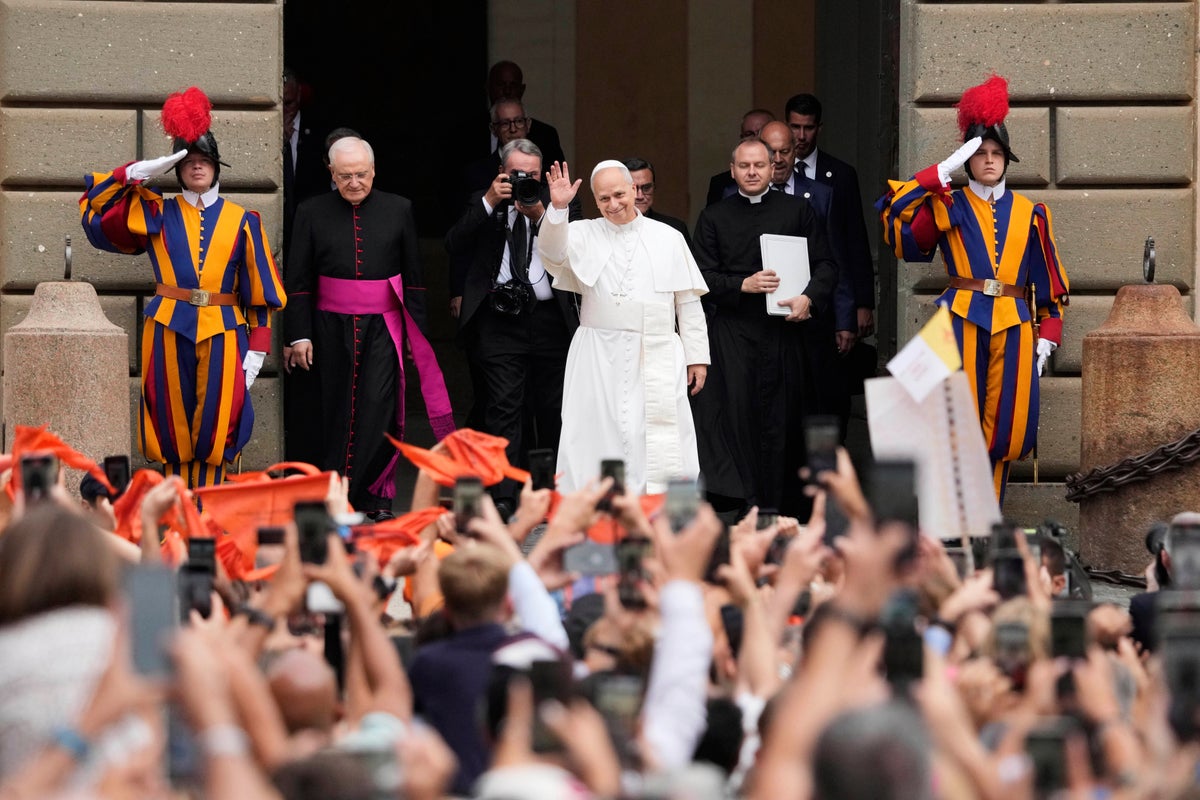
© Copyright 2025 The Associated Press. All rights reserved
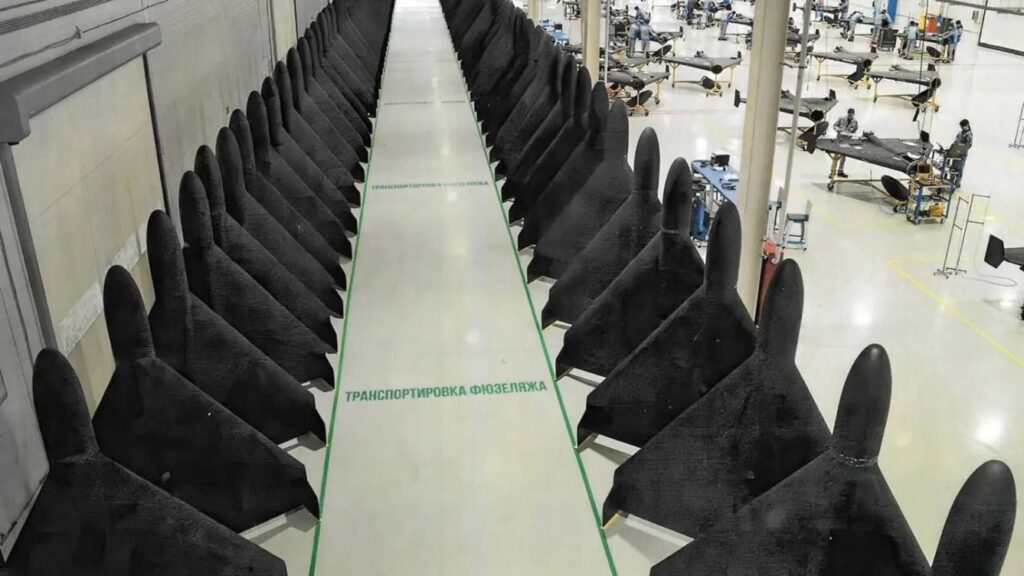
Ukraine’s Air Force said it intercepted 63 of 97 Russian drones overnight on 15 August. Russia also launched two Iskander-M missiles. Despite most drones being destroyed, the strikes killed and injured civilians in Kharkiv, Sumy, Donetsk, and Kherson oblasts, damaging homes, cars, farms, and infrastructure in at least 13 locations.
The Air Force reported that Shahed attack drones, decoy UAVs, and ballistic missiles were launched from five directions, targeting both frontline and rear settlements. Aircraft, electronic warfare units, and mobile fire groups were used to repel the assault, but local officials in four oblasts confirmed fresh deaths and injuries alongside severe property damage.
“Impacts from missiles and 34 UAVs were recorded at 13 locations,” the Air Force reported.
Kharkiv Oblast head Oleh Synehubov said Russian forces attacked five settlements in the last 24 hours, killing four people and injuring two.
Russian attacks killed a 64-year-old man in Kozacha Lopan. In Nechvolodivka, Russian forces killed a 69-year-old man and a 69-year-old woman and injured a 76-year-old woman. In Nova Kozacha, Russian strikes killed a 38-year-old man and injured another 38-year-old man. The attacks damaged detached houses in Kozacha Lopan and Nova Kozacha, two houses and a car in Nechvolodivka, and a garage, two cars, a tractor, and a vegetable storage building in Borova. Russian forces used guided aerial bombs, a Molniya drone, FPV drones, and other UAVs.
The Sumy Oblast Military Administration reported 100 strikes on 46 settlements in 16 communities between the morning of 14 August and the morning of 15 August.
In Miropilska community, a 32-year-old man was injured by an FPV drone. In Sumska community, a gas station was hit by a Russian UAV, burning a civilian vehicle and injuring its driver, who suffered burns. Damage was reported to houses, apartment buildings, civilian cars, and non-residential buildings in Bilopilska, Velykopysarivska, Vorozhbianska, and Hlukhovska communities. Russian forces used guided bombs, multiple rocket launchers, FPV drones, and other UAVs. Eleven people were evacuated from border areas during the day.
Donetsk Oblast head Vadym Filashkin said Russian shelling on 14 August killed two civilians — one in Kostyantynivka and one in Virivka — and injured seven others across the oblast.
The Kherson Oblast Military Administration’s morning report, covering 06:00 on 14 August to 06:00 on 15 August, said Russian artillery and drone attacks on more than 40 settlements killed one person and injured five others, including a child. Damage included apartment buildings, 22 detached houses, gas pipelines, outbuildings, and a private car.
This morning, around 08:00 on 15 August, Russian artillery hit central Kherson, injuring a 52-year-old man. Another update said a 40-year-old Kherson resident was injured in the same shelling, suffering blast injuries and a concussion. Also around 08:00, a drone struck a home in Kherson, injuring a 45-year-old woman with a concussion and head injuries.
Additional information emerged about earlier shelling in Shliakhove, Beryslav community, which killed two men aged 86 and 56 several days before. Later still, three medical workers — two women aged 47 and a 28-year-old man — sought treatment for blast injuries and concussions sustained in a previous day’s Russian shelling of Kherson.
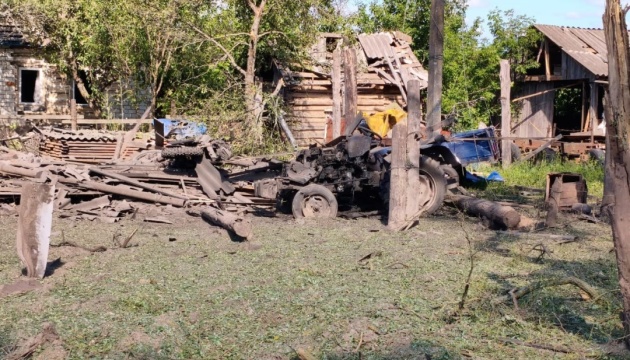
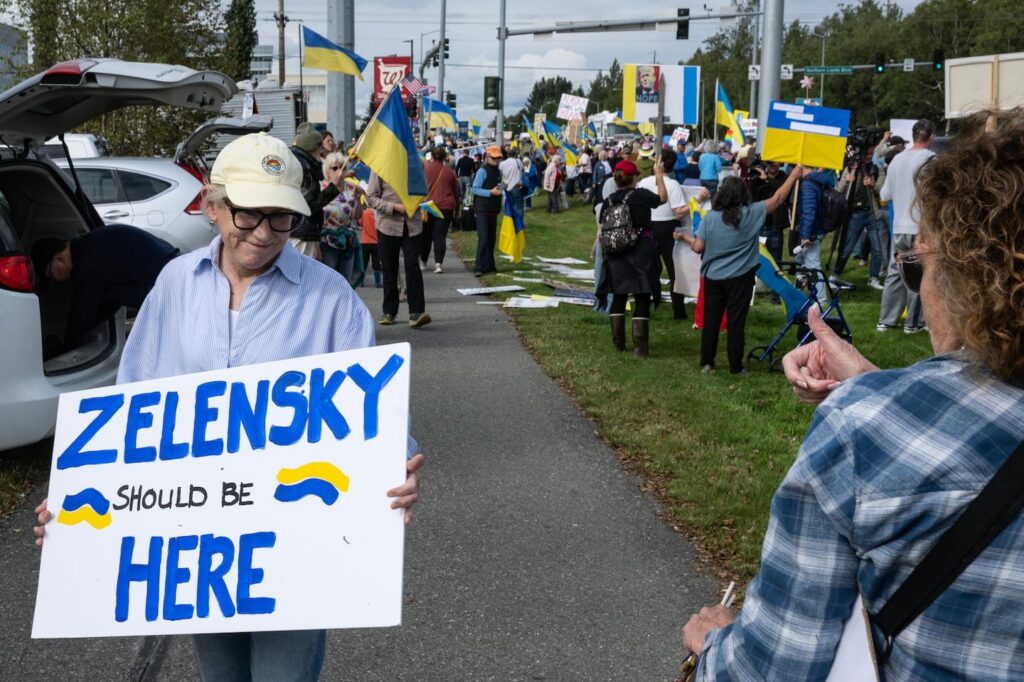
Alaska’s Anchorage is preparing for the 15 August meeting between US President Donald Trump and Russian leader Vladimir Putin, as local protesters warn it could lead to a deal undermining Ukraine. The meeting is scheduled for 11:00 a.m. Alaska time (22:00 Kyiv time) at Joint Base Elmendorf-Richardson, a Cold War–era military installation once used to counter the Soviet Union.
This will be the first face-to-face meeting between Trump and Putin since Trump returned to the presidency this January. According to the White House, Trump will leave Washington at 06:45 Eastern time (13:45 Kyiv time) and return early on 16 August, Reuters reports. The Kremlin initially claimed the meeting would begin at 11:30 a.m. local time (22:30 Kyiv time).
Trump previously told reporters on 14 August that he would know “in the first few minutes” whether the meeting was worth continuing, adding it would “end very quickly” otherwise. He said his aim was to “set the table” for another meeting that would also involve Ukrainian President Volodymyr Zelenskyy.
Speaking to Fox News Radio, Trump said there was a “25% chance” the Alaska talks would fail, according to BBC. He also said “give and take” on boundaries between Russia and Ukraine might be necessary, prompting concern in Kyiv and among allies.
AP says Putin praised what he described as Trump’s “sincere efforts” to end Russia’s war in Ukraine. The Russian leader suggested long-term peace could include a nuclear arms control agreement with the US.
Russia demands for a full ceasefire include complete control of Donetsk and Luhansk oblasts, full occupation of Kherson and Zaporizhzhia, NATO membership ruled out for Kyiv, and limits on Ukraine’s armed forces.
Ukraine rejects these conditions as surrender. A Kremlin source told Reuters some terms could be agreed due to sanctions pressure, but both sides would allegedly face “uncomfortable compromises.”
BBC notes that Zelenskyy and European leaders fear Trump could make concessions without Ukraine’s participation. UK Prime Minister Keir Starmer met Zelenskyy in London on 14 August and warned that “international borders cannot be, and must not be changed by force.” Macron said Trump had clarified NATO would not be part of any future security guarantees, but the US and other parties should be involved.
The New York Times reports that five principles agreed in a call between Trump and European leaders include keeping Ukraine “at the table” for follow-up talks, avoiding land swaps before a ceasefire, securing postwar guarantees, and increasing pressure on Russia if negotiations fail.
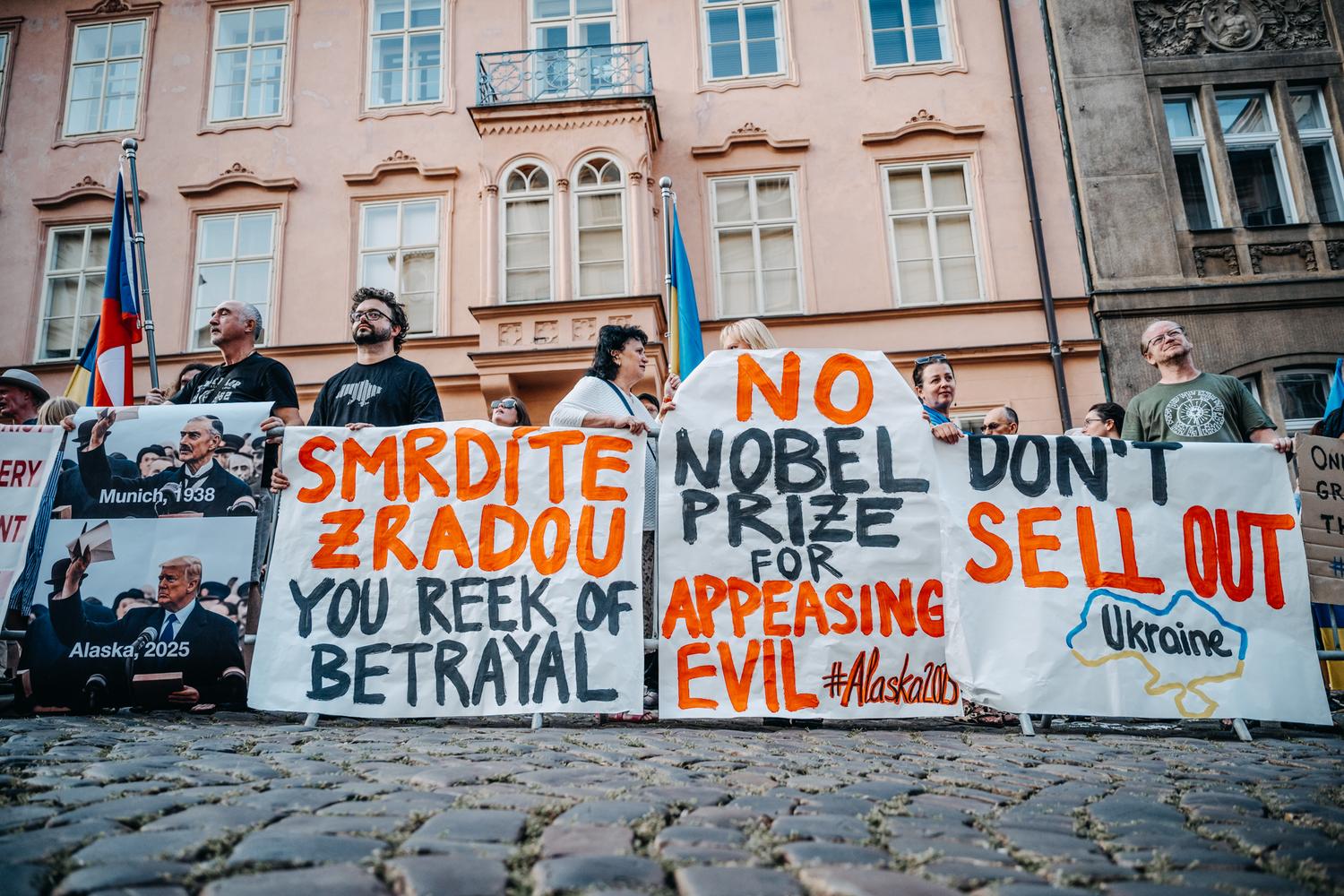
Anchorage Daily News reports that on 14 August, several hundred demonstrators lined busy intersections in Anchorage, waving Ukrainian flags and holding signs critical of both Trump and Putin. One sign read “Putin won’t stop at Ukraine,” while another declared “Zelenskyy should be here,” reflecting demands that Ukraine be included in the talks.
Protesters told ADN they feared the summit would exclude Kyiv from decisions affecting its future. Organizers plan additional demonstrations during the summit, while the Alaska GOP will hold a rally in support of Trump at the same location.
BBC reported that Ukrainian MP Oleksandr Merezhko said he has “no high expectations” for the Alaska meeting, calling it “already a diplomatic win” for Putin. He warned that “the fate of Ukraine should be decided by Ukrainians” with the direct participation of President Zelenskyy, and said the lack of transparency around the summit creates “lots of risks” for Ukraine’s security and future.
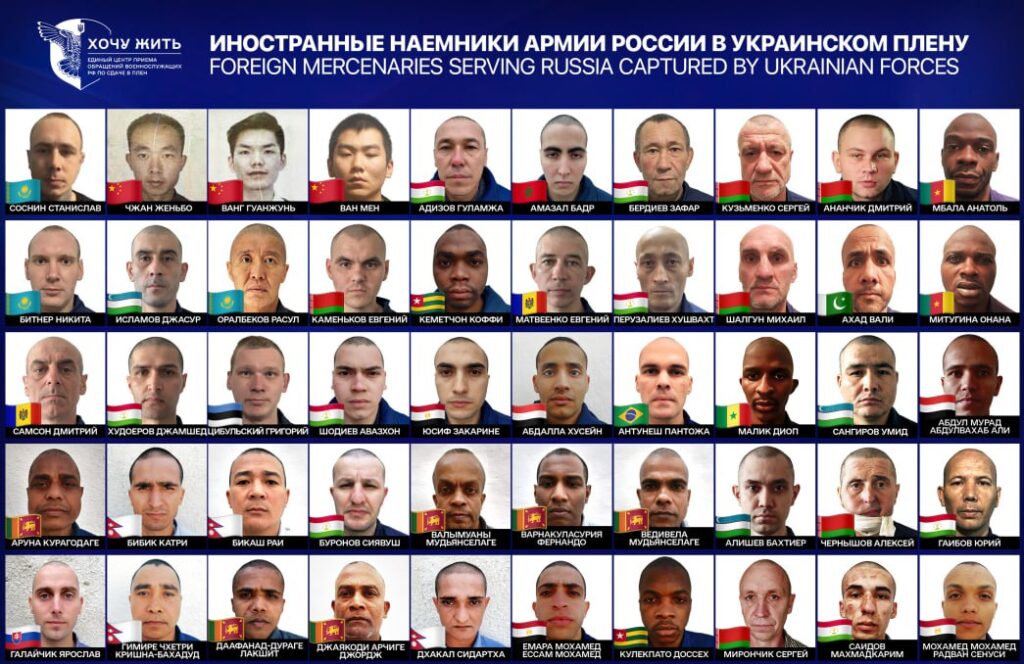
Ukraine currently detains more than 100 foreign mercenaries from 33 countries who were recruited to fight for Russia, according to the I Want to Live project from Ukraine’s Coordination Headquarters for the Treatment of Prisoners of War on 1 August 2025.
The captives show Russia’s expanding global recruitment drive, while Moscow abandons foreign fighters by excluding them from prisoner exchanges despite Ukraine treating all detainees according to international standards.
The captured fighters include citizens from Cameroon, Morocco, Somalia, Senegal, Egypt, and dozens of other nations recruited through Russia’s expanding global recruitment network, according to the I Want to Live project.
The scope of foreign captives exposes Russia’s systematic recruitment from economically vulnerable populations worldwide, with Moscow’s promises of wealth and stable careers leading fighters into Ukrainian POW camps where Russia shows no interest in their release.
The Coordination Headquarters reports that Russia has recruited fighters from 121 countries since launching its full-scale invasion in February 2022. The I Want to Live project, which encourages voluntary surrender, stated that “Russia actively bribes, deceives, and coerces individuals from neighboring Central Asian countries and more into signing contracts.”
The photographs of mercenaries released by Ukrainian authorities represent only a fraction of foreign fighters captured during what the Coordination Headquarters called Russia’s “meat grinder” assaults. Many were recruited through false promises of non-combat roles or civilian employment, only to be deployed directly to front-line positions within days of arrival.
Previous reporting by BBC Russian Service documented over 500 foreigners from 28 countries killed while fighting for Russia, with the actual numbers likely significantly higher due to incomplete record-keeping of non-Russian casualties.
The foreign prisoners receive the same treatment as Russian soldiers in Ukrainian prisoner-of-war camps, according to the I Want to Live project. “They sleep in the same facilities, receive the same food and medical care, and have access to representatives of the International Committee of the Red Cross,” the project stated.
Some countries have sent embassy staff to visit their detained citizens, though Russia has shown no interest in including foreign fighters in prisoner exchanges. “For Russia, these fighters are considered ‘third-rate’ and hold no value to Moscow while in captivity,” the Coordination Headquarters stated.
Ukrainian officials have repeatedly stated their commitment to Geneva Convention obligations in treating detainees, contrasting sharply with documented treatment of Ukrainian prisoners in Russian custody, where international monitors report systematic torture and denial of medical care.
Russia’s recruitment strategy particularly targets migrants and students from economically challenged nations. Forbes Ukraine reported in May 2024 that Russian recruiters operate in at least 21 countries, using databases of foreign nationals who previously sought employment in Russia.
The recruitment extends across continents, from Central Asian republics like Tajikistan and Uzbekistan to African nations including Burkina Faso, Mali, and the Central African Republic where Wagner Group maintains military bases. Cuban authorities have issued conflicting statements about their citizens’ participation, while Nepalese and Indian nationals have been documented among both casualties and prisoners.
Ukrainian President Volodymyr Zelenskyy stated in August 2025 that Ukrainian forces reported encountering mercenaries from China, Tajikistan, Uzbekistan, Pakistan, and African countries, adding that “we will respond” to this escalating threat.
The presence of foreign fighters complicates prisoner exchange negotiations, as Russia typically excludes non-Russian nationals from swap arrangements.
The case differs significantly from Ukrainian foreign volunteers, who serve under official military contracts and maintain clear legal status under international humanitarian law. The International Legion for the Defence of Ukraine operates under direct Ukrainian military command, ensuring proper combatant status for its members. Ukraine has also announced plans to grant citizenship to foreign fighters serving in its Defense Forces and their families.
With intervention from international organizations and home countries, some foreign fighters may eventually return to their homelands, though the Coordination Headquarters warned that “their stories serve as a warning to other money-seekers: Putin’s war devours everyone indiscriminately, and being a mercenary in the Russian army means becoming expendable in a foreign criminal war.”
The growing number of foreign captives highlights Russia’s increasing dependence on external recruitment as domestic mobilization efforts face issues and the conflict’s casualty toll continues rising after more than three years of warfare.
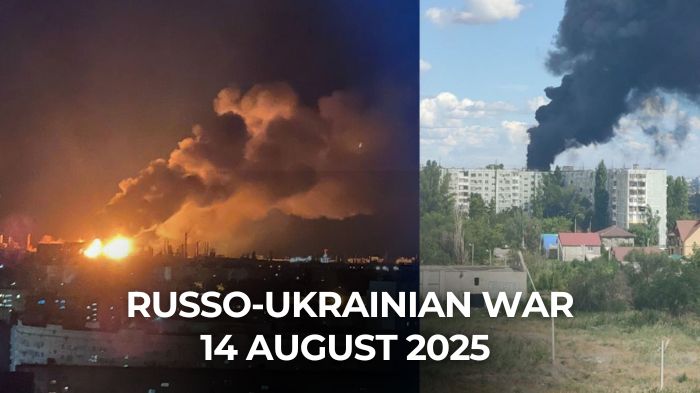
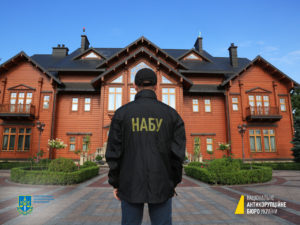 |
Ukraine’s corruption fighters survive presidential assault but face ongoing threats. Ukraine’s corruption investigators are back to charging million-dollar schemes after surviving a July attempt to strip their independence. But they’re working under a government that still has the administrative tools to derail sensitive cases and has demonstrated its willingness to use them. |
 |
The peace that kills: How the Alaska summit could end Ukraine without ending the war. In Washington, they call it peace negotiations. In Moscow, they call it Ukraine’s legal execution. |
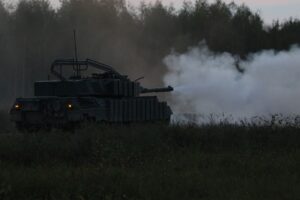 |
Russian infiltrators near Pokrovsk are about to get the tank treatment. Ukraine is rushing heavy armor toward Pokrovsk. The tanks could help roll back a dangerous Russian incursion. |
 |
How Russian drinking culture delayed Ukraine’s biggest Spider Web strike on airbases. The Security Service of Ukraine originally planned the operation for early May, but Russian drivers’ Easter drinking binges forced a delay for a month |
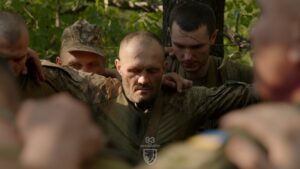 |
So you think Ukraine can just leave Donbas? It’s the shield forged in steel — and paid in blood. The Donbas fortress belt has held for years against Russia’s army. Surrendering it would open the road west. |
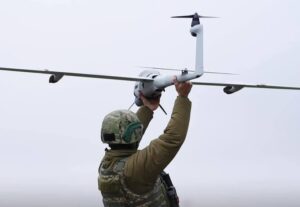 |
Ukraine builds resilience as Russia doubles down. The daily bombardment of Ukrainian cities and battlefield dynamics tells a starker story than diplomatic calendars suggest. |
 |
The Ukraine war won’t end in Alaska—but Western unity might. Putin gets an American partner against Europe; Trump gets to claim he tried diplomacy. |
Debris found after Russian Su-30 crash near Ukraine’s Zmiinyi (Snake) Island in Black Sea, Navy says. Ukrainian officials say radio intercepts showed a Su-30 vanished near Zmiinyi (Snake) Island, with wreckage spotted and the pilot missing.
Frontline report: Ukrainian marines flush out Russians from moldy cellars to save Pokrovsk. Marines fight room to room in a coal village shielding Pokrovsk from an eastern encirclement.
Satellite photos reveal what’s left of Russia’s key oil hub and prized radar in Crimea
. Charred pipeline structures and mangled radar towers tell the story of the recent strikes.
Czech initiative delivers million ammunition rounds to Ukraine in 2025 – Fiala. Czech Prime Minister Petr Fiala reported that Ukraine has received over one million large-calibre ammunition rounds in 2025 through a Czech-coordinated supply initiative
One million shells in eight months — Czech ammo push for Ukraine reaches milestone as Trump–Putin talks loom. The Czech Prime Minister revealed the figure during a coalition-of-the-willing meeting just days before the Alaska summit.
Berlin commits $ 500 million to Ukraine, sourcing weapons directly from US reserves. The goal is rapid delivery of air defense and other vital gear. NATO says the package will include urgently needed air defense systems.
Russian Feniks recon UAV washed ashore on beach in Bulgaria—it crashed months ago in the Black Sea. Bulgarian Navy specialists blew up the drone wreckage found on the beach.
Global crowds demand “no new Munich” as Trump-Putin summit excludes Zelenskyy. Global demonstrations reject territorial concessions as bilateral meeting sidelines Ukrainian president
Russian territorial claims to Alaska resurface ahead of Trump-Putin summit. Kremlin propagandists leverage the symbolic summit venue choice to fuel territorial fantasies.
ISW: Russia’s pre-Alaska-summit position leaves no path to genuine talks — it just confirmed its peace plan still means Ukraine’s capitulation. Deputy Foreign Ministry official Fadeev’s remarks reveal the Kremlin still wants total capitulation before talks.
Some 42% of Germans favor Ukrainian territorial concessions to end war – poll. As Donald Trump prepares to meet Vladimir Putin in Alaska on Friday, Germans remain divided on a key question: should Ukraine trade land for peace to end the grinding war?
Security guarantees without NATO? Trump’s Ukraine plan draws cautious optimism and concern before his Putin summit. Politico sources say the offer lifted some hopes, but leaves glaring holes in how Kyiv would be defended after the war.
. NBC reports Trump told Zelenskyy and EU leaders his focus is a Ukraine ceasefire, not border changes.
“Get out now”: Ukraine tells families to flee as 5 more Donetsk towns face Russian guns closing in. Regional officials added Druzhkivka and four nearby villages to the evacuation list as Russian strikes reach 3,000 a day.
Russian war crimes: Ukraine has evidence occupiers forcibly deported 15 children from special school to Russia. Children were forbidden to speak Ukrainian or display Ukrainian symbols while being forced to participate in pro-Russian events and sing Russian anthem.
Hydroelectric crisis: Ukraine records smallest water stocks since 2015. Ukraine’s hydroelectric reservoirs have dropped to their lowest levels in a decade following an exceptionally dry spring. By autumn, Ukrhydroenergo promises to accumulate water reserves
Ukraine swapped 84 prisoners with Russia — and got its legendary minesweeper captain back. Among those freed were Mariupol defenders and civilians held for nearly a decade, Zelenskyy said.
Reuters: UN warns Russia of responsibility for sexual violence against prisoners of war. Russian forces subjected Ukrainian prisoners of war to electrocution of genitals and prolonged nudity across 72 detention facilities, prompting UN warnings of potential blacklisting
Read our earlier daily review here.
You could close this page. Or you could join our community and help us produce more materials like this.
We keep our reporting open and accessible to everyone because we believe in the power of free information. This is why our small, cost-effective team depends on the support of readers like you to bring deliver timely news, quality analysis, and on-the-ground reports about Russia's war against Ukraine and Ukraine's struggle to build a democratic society.
Become a patron or see other ways to support.

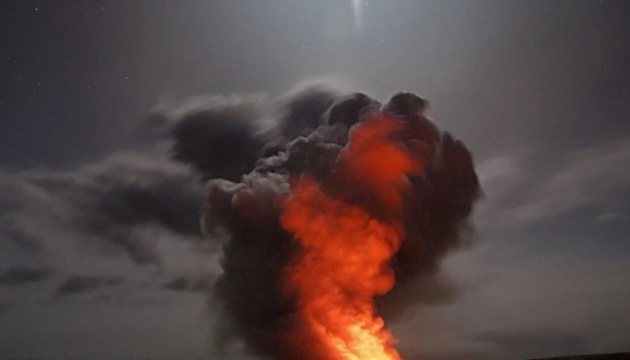
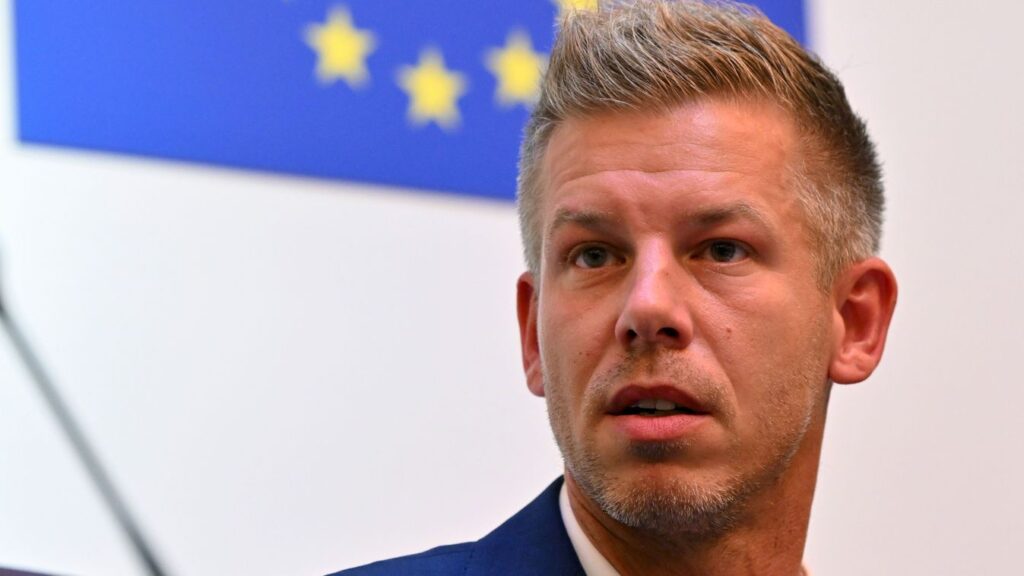
Hungarian opposition leader Péter Magyar has accused Russia of deploying its intelligence services to undermine his campaign against Prime Minister Viktor Orbán, the Kremlin’s closest ally in the European Union. Bloomberg reports that the Kremlin’s Foreign Intelligence Service released a statement portraying Magyar as an alleged stooge of the European Commission, repeating language Orbán has used to attack him.
On 13 August, Russia’s spy agency published the accusations from Moscow, aligning closely with Orbán’s campaign narrative, Bloomberg reports. The next day, Hungarian Foreign Minister Péter Szijjártó backed the Russian claims, saying the statement contained “nothing new.”
Magyar’s Tisza Party currently holds double-digit leads in public opinion polls ahead of elections scheduled for April. The race is unfolding against the backdrop of a sluggish economy and persistent allegations of corruption. Bloomberg notes that Moscow’s involvement is expected to further raise the stakes and reopen debate about Hungary’s position within NATO and the EU, which Orbán has challenged over the past decade.
In a Facebook post, Magyar drew parallels to the Soviet era, recalling the departure of Soviet troops from Hungary in the early 1990s.
“After 34 years, Russia again wants to directly meddle in Hungarian politics, again it wants to unabashedly influence the decision of Hungarian voters,” he wrote.
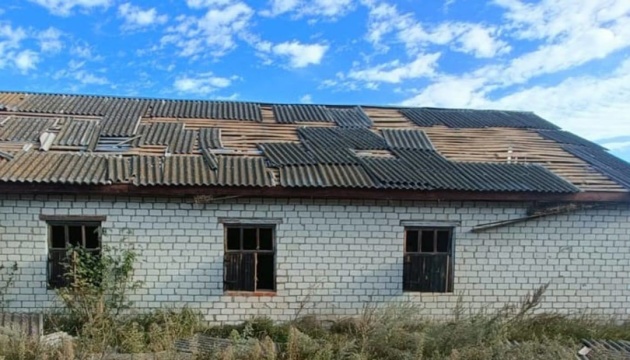

Trump is flying to Anchorage for his meeting with Putin with a team which has no grasp on facts, or truth, and therefore no grasp on reality either, writes world affairs editor Sam Kiley

© AP
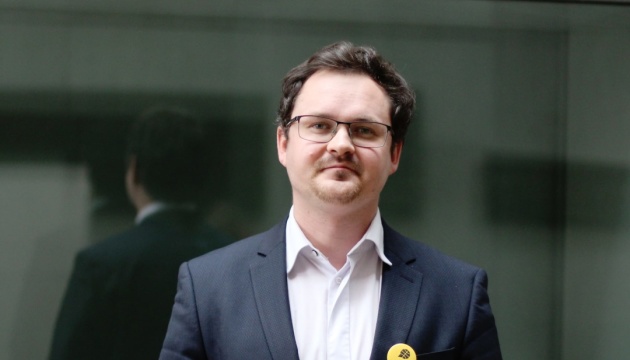
Russian and American delegations have arrived in Alaska ahead of crucial talks later on Friday

© Ukrainian Presidential Press Service
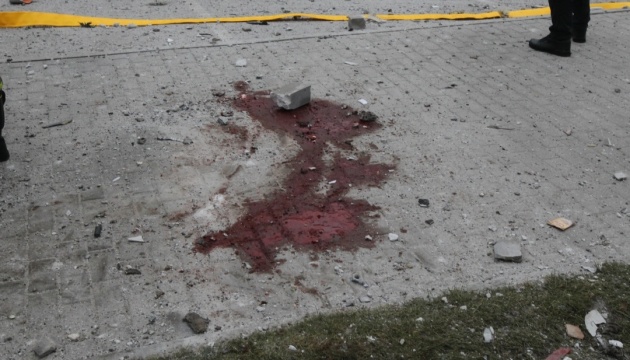
Letter sent to mark anniversary of end of Japan’s colonial occupation of Korea is latest sign of increasingly close ties between two leaders

© POOL/AFP via Getty Images
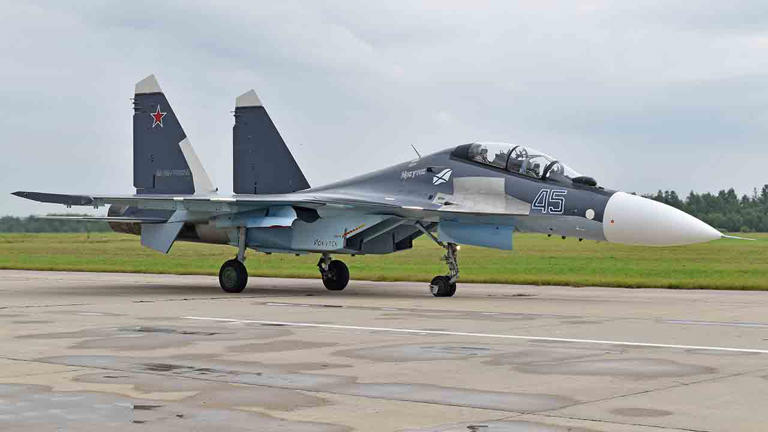
Ukraine’s campaign to erode Russian air power in the Black Sea region has taken a heavy toll on the 43rd Naval Assault Aviation Regiment of the Russian Black Sea Fleet, Militarnyi reports. The regiment, stationed at the occupied Saky airfield in Crimea, began 2022 with a full squadron of 12 Su-30SM multirole fighters. In the three years since the full-scale invasion began, seven of those aircraft have been destroyed in confirmed incidents, with two more damaged. The unit’s fleet has been reduced to less than half its original strength.
Since the start of Russia’s full-scale invasion in February 2022, Ukraine has been targeting Russian military aviation with all available means, including cruise missiles, man-portable air-defense systems, other anti-air weapons, sabotage, and long-range drones. The Russian-occupied Crimean Peninsula often becomes a target for long-range attacks, where the Ukrainian hit Russian air defense assets, Navy ships, and other military installations and equipment.
According to Militarnyi, the 43rd regiment’s first confirmed Su-30SM loss occurred on 5 March 2022 over Mykolaiv Oblast. Both crew members ejected and were taken prisoner. One of them, Major Oleksii Holovenskyi, was the squadron commander at the time. The other, Captain Aleksei Kozlov, served as the aircraft’s navigator. This loss marked the beginning of a series of blows to the unit.
Just months later, on 9 August 2022, Ukrainian Security and Defense Forces struck the Saky airfield, which had been captured by Russia after 2014 and became home to the regiment under military unit number 59882. The attack destroyed three Su-30SMs outright and damaged another. The same strike also destroyed five Su-24 bombers and damaged three more, inflicting serious damage on the regiment’s overall combat capabilities.
The Russian regiment’s losses continued into 2024. On 11 September, Militarnyi reports, Russian forces lost contact with a Su-30SM around 5 a.m. The Ukrainian Main Intelligence Directorate (HUR) later confirmed that a special operations unit had downed the aircraft using a man-portable air-defense system.
In 2025, Ukraine introduced new tactics that marked a milestone in aerial warfare. On 2 May, working jointly with the Security Service of Ukraine and other defense forces, HUR targeted another Su-30SM in the Black Sea. The aircraft was destroyed by an AIM-9 missile launched from a maritime drone — the first recorded instance in history of a manned aircraft being shot down by such a platform.
The most recent confirmed loss was reported by the Ukrainian Navy yesterday, on 14 August 2025. According to the Navy, its intelligence service intercepted Russian radio communications revealing the sudden loss of contact with a Su-30SM southeast of Zmiinyi (Snake) Island in the Black Sea. Defense Express reports that the aircraft crashed under still-unclear circumstances while on a combat mission.
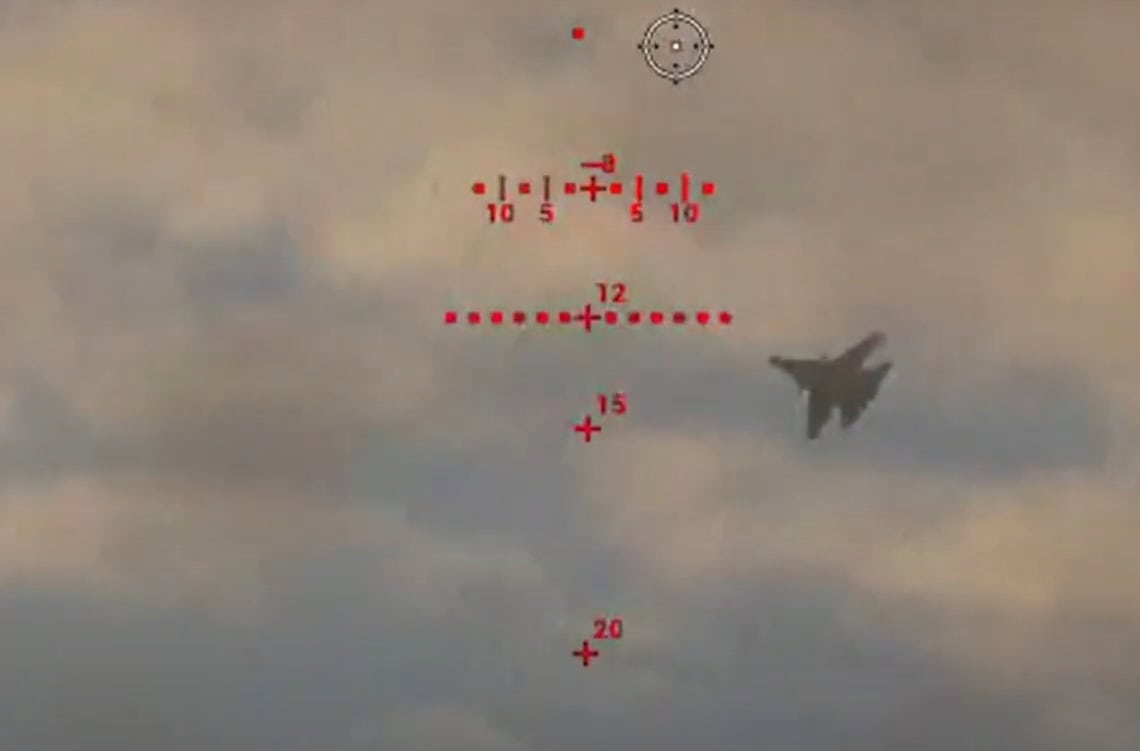
Intercepted communications indicated that Russian forces launched a search-and-rescue operation in the area. Ukrainian Navy statements said wreckage had been spotted floating on the sea surface, but there was no confirmed information on the fate of the pilots. Russian rescuers have not reported recovering either crew member.
Militarnyi notes that in addition to the seven destroyed Su-30SMs, the regiment has suffered damage to two others. One was damaged during the August 2022 strike on Saky airfield, while another was hit on 1 July 2025 by a long-range Ukrainian UJ-26 Bober drone in another attack on the same base.
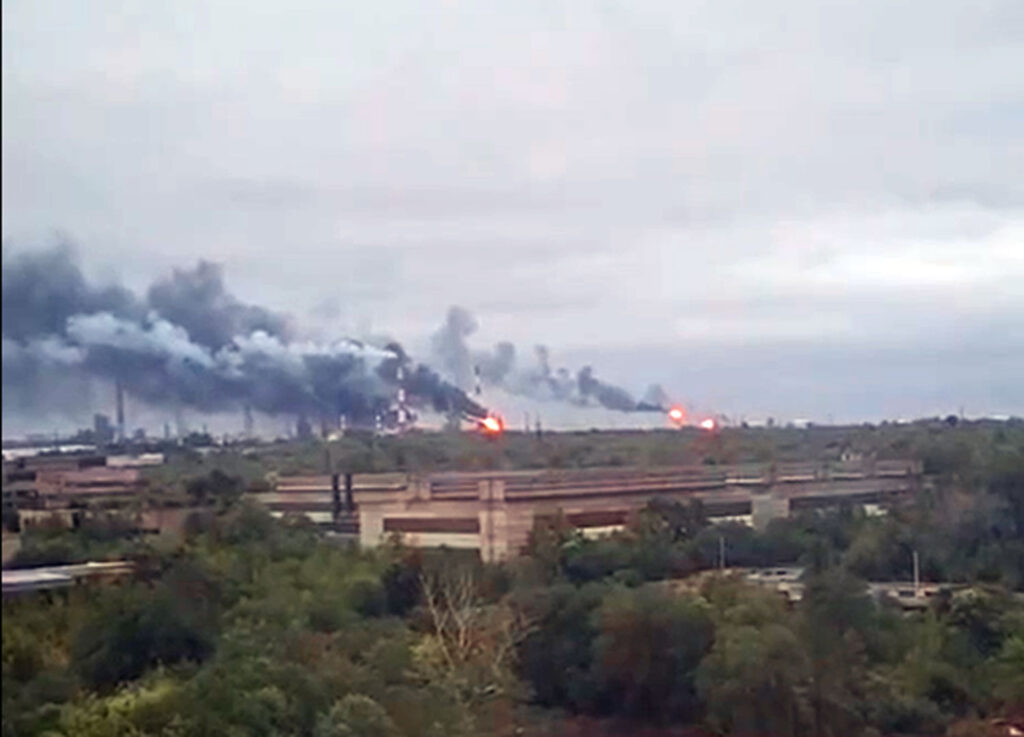
Overnight on 15 August, drones struck the Rosneft-owned oil refinery in Syzran, Samara Oblast, sparking large fires at the facility. Located about 800 km from the front line, the plant is a major fuel supplier for both civilian needs and Russian military forces. The attack prompted emergency measures, including airspace closures and restrictions on mobile internet access across the region.
Media reports and social media posts, including videos shared by the Ukrainian Telegram channel Exilenova+, showed multiple fires and heavy smoke rising from the refinery after the strike. Residents said the first explosions occurred around 04:00, with at least ten blasts heard in total. The footage captured several points of fire and dense black smoke billowing over the complex.
Samara Oblast governor Vyacheslav Fedorishchev claimed that Russian forces destroyed 13 drones and did not confirm any damage to the facility. He announced that the “Kovyor” emergency plan had been activated, grounding aircraft and closing airspace, and that mobile internet restrictions were in place “for public safety.” Residents, however, reported ongoing fires at the refinery.
The Syzran refinery processes about 8.9 million tons of crude oil annually, producing gasoline, diesel, jet fuel, and bitumen. It supplies fuel to Samara, Saratov, and Penza oblasts, parts of central Russia, as well as airfields and military units of the Central and Southern Military Districts. Damaging the facility disrupts fuel deliveries to Russian occupation forces.
The plant has been attacked before. Ukrainian drones also struck it in February and March this year, causing fires then as well.
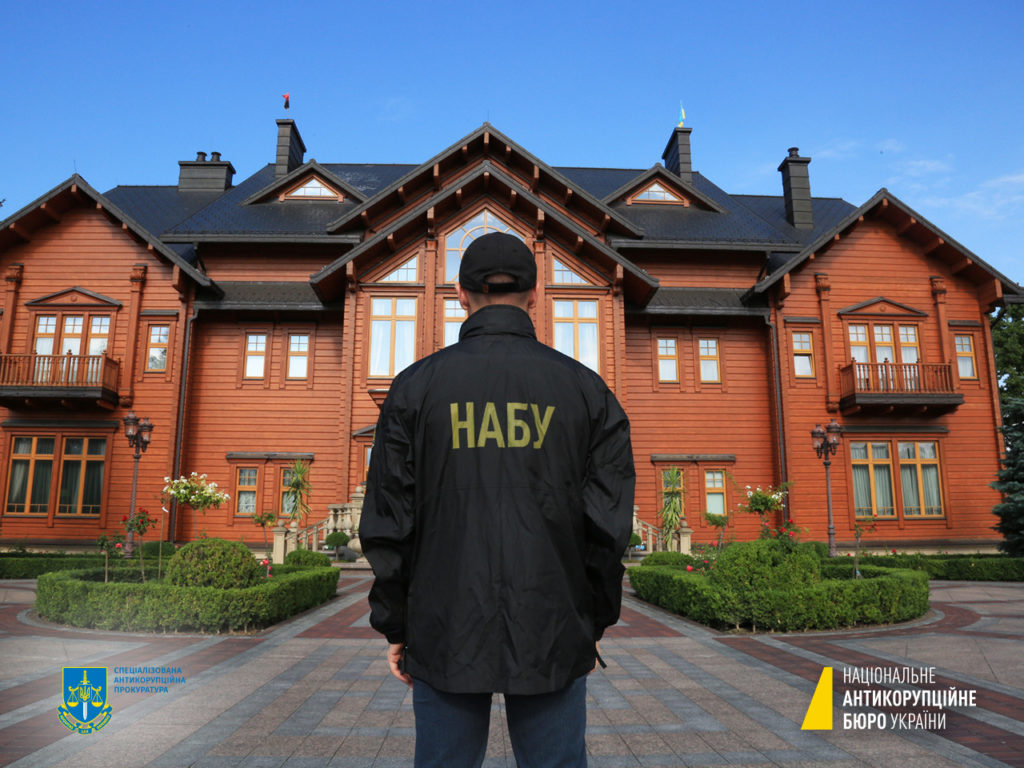
The National Anti-Corruption Bureau (NABU) and Specialized Anti-Corruption Prosecutor’s Office (SAPO) delivered record results in the first half of 2025: 370 new investigations, 115 suspects charged, and 62 convictions — wartime performance that exceeded even their substantial late-2024 numbers. This week, they announced charges against a senior Defense Ministry official accused of soliciting $1.3 million in bribes to rig military housing contracts.
Yet simultaneously, a parliamentary commission has begun examining their work, a timing that raises questions about the government’s true intentions.
The question isn’t whether NABU and SAPO can function — they clearly can — but whether they can work undisturbed when the same political forces that tried to subordinate them in July remain in power, wielding the same administrative tools that could disrupt sensitive investigations.
The agencies formally regained their independence on 31 July after mass protests forced parliament to reverse controversial Law 12414. But the nine-day subordination to the Prosecutor General wasn’t an isolated misstep — it was the culmination of pressure that had been building since NABU charged former Deputy Prime Minister Oleksiy Chernyshov, a member of President Volodymyr Zelenskyy’s inner circle.
What made July different wasn’t just the attempt to strip institutional independence. It was how quickly UAH 120 million ($2.9 million) appeared for Chernyshov’s bail, and how rapidly 70 raids materialized against NABU officials when the agencies refused to back down.
The message was clear: there are limits to how close anti-corruption investigations can get to the president’s political family.
The speed of that bailout also raised uncomfortable questions in Brussels, where officials watching Ukraine’s EU accession bid wondered how deep corruption networks run.
Since then, nothing fundamental has changed.
The same officials who designed Law 12414 remain in office. The same networks that mobilized Chernyshov’s bail remain intact. And crucially, parliament left three dangerous provisions that weaken the broader prosecutorial system.
While NABU and SAPO regained their statutory independence, the government retained legal mechanisms that could still disrupt their work:
The government can’t longer directly control NABU and SAPO, but it can create pressure points. Many high-profile corruption cases involve multiple jurisdictions. The Prosecutor General can, for example, influence sensitive investigations without formally touching the agencies’ autonomy by controlling appointments, reassigning personnel, or pulling case materials.
As the Agency for Legislative Initiative warned, the ability to appoint prosecutors without competition “undermines selection standards, contradicts the principle of prosecutorial independence, and creates risks for the legitimacy of personnel decisions.”
EU officials welcomed NABU’s and SAPO’s restored independence, but of course, they’re keenly tracking whether administrative pressure continues. Any perception that Ukraine’s anti-corruption institutions operate under political constraint could slow accession talks just as they gain momentum — exactly when Ukraine needs the perspective of a future EU membership most.
For Brussels, the July crisis and its aftermath matter beyond Ukrainian domestic politics.
The EU has made competitive selection for top prosecutorial positions a condition for Ukraine’s 2026 accession timeline. The current law doesn’t meet that requirement.
Beyond formal legal tools, the government has other ways to signal displeasure. The parliamentary commission examining NABU and SAPO, launched just weeks after their independence was restored, exemplifies this approach.
Commission chair Serhiy Vlasenko insisted the timing was coincidental, telling the news outlet Glavcom that the idea to create such a commission had been with him for a long time because, according to him, corruption had increased many times over in the last ten years.
Then there’s the case of appointing leading NABU investigator Oleksandr Tsyvinskyi to head the Bureau of Economic Security (BEB), which only materialized under external pressure tied to Western aid packages.
Earlier this month, the government finally appointed an anti-corruption investigator they had spent months trying to reject — a high-profile example of the bureaucratic obstacles that can impede institutional progress.
This puts Ukrainian civil society in a position of permanent vigilance. The Cardboard Revolution, which forced the government to retreat in July, proved that public mobilization works, but it also showed the limits of partial victories.
Citizens managed to save NABU and SAPO’s headline independence, but the technical changes that enable indirect interference remain.
Nevertheless, NABU’s and SAPO’s continued casework proves the agencies are functional. They seem to pursue major cases without political interference. The Defense Ministry bribery investigation, which began in June, proceeded normally through the July crisis and resulted in charges this week.
But functionality isn’t the same as security. The agencies are working in what amounts to hostile territory — surrounded by political actors who view their independence as a constraint on executive power rather than a democratic achievement.
The real test will accompany the next high-profile case that touches Zelenskyy’s inner circle.
Will investigators proceed with the same determination they showed with Chernyshov? Will the Security Service launch another wave of “anti-Russian” raids against anti-corruption officials?
NABU and SAPO proved Ukrainian civil society can force government retreats.
However, both anti-corruption agencies are still playing defense in a system where the same officials who tried to subordinate them remain in power, holding the same tools and probably the same views.
The next high-profile case touching Zelenskyy’s inner circle will show whether July was a genuine victory or a temporary tactical withdrawal.
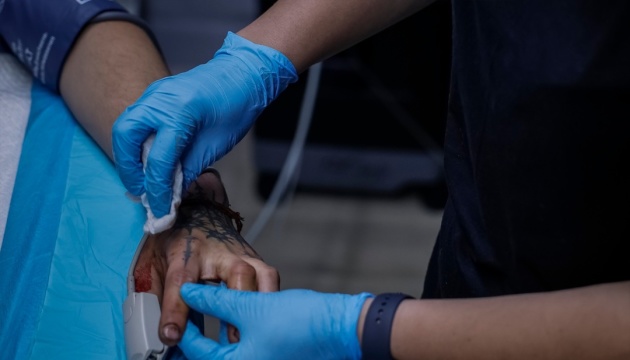

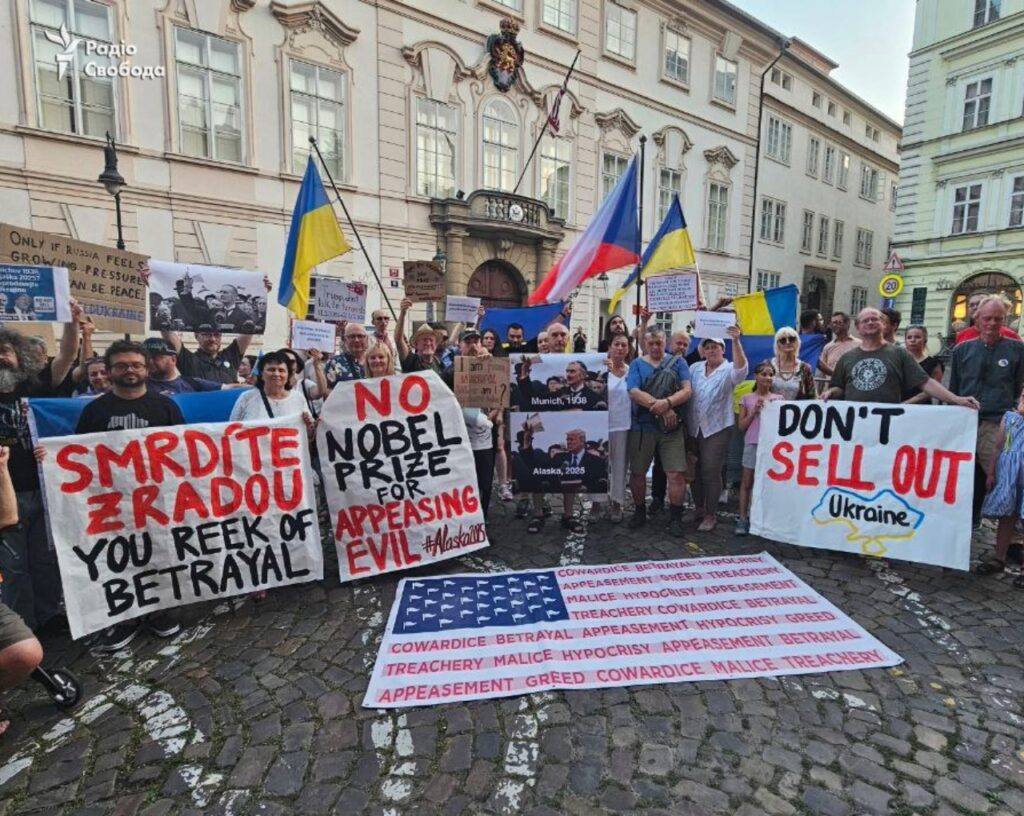
President Donald Trump and Russian President Vladimir Putin are meeting today in Anchorage, Alaska, triggering protests across multiple continents as activists warn against territorial concessions that could reward Russian aggression.
The bilateral summit—Putin’s first visit to US soil in nearly a decade—deliberately excludes Ukrainian President Volodymyr Zelenskyy despite the war being the primary agenda item. Trump has indicated any peace deal will involve “some swapping of territories,” prompting fears of a repeat of 1938’s Munich Agreement.
From Helsinki to Sydney, protesters gathered under banners reading “DON’T SELL OUT UKRAINE” as the Alaska meeting commenced. Finnish demonstrators in Helsinki highlighted the parallels to previous failed appeasement attempts, while crowds in Prague carried signs explicitly referencing “no new Munich.”
“Ahead of the US president’s meeting with war criminal Putin, we call for no new Munichs,” said Vlada Dumenko of the International Center for Ukrainian Victory (ICUV). “Any future peace agreement must comply with international law, including the principles of independence, sovereignty, territorial integrity, and the prohibition of changing borders by force.”
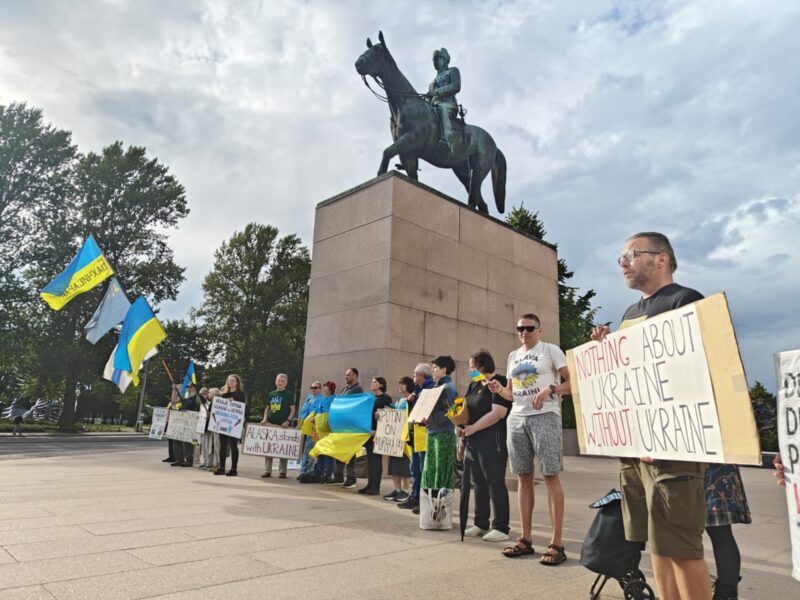
The protests span continents, with demonstrations reported in:
Today’s summit represents Trump’s most significant diplomatic gamble since taking office, coming after his August 8 deadline for Putin to agree to a ceasefire passed without Russian compliance. Instead of imposing the threatened “secondary sanctions,” Trump opted for direct talks in Alaska—a location that Kremlin officials called “quite logical” given its proximity to Russia.
Trump has described the meeting as a “feel-out” session to gauge Putin’s willingness to negotiate, but has already signaled openness to territorial exchanges. “We’re going to get some back, and we’re going to get some switched. There’ll be some swapping of territories,” Trump told reporters.
European leaders issued a joint statement over the weekend insisting “the path in Ukraine cannot be decided without Ukraine,” signed by officials from the UK, France, Italy, Germany, Poland, Finland, and the European Commission.
Ukrainian activists fear the bilateral format gives Putin leverage to push for territorial gains while sidelining Ukrainian input. Any territorial concessions would violate Ukraine’s constitution and require parliamentary approval or a national referendum.
“Nothing about Ukraine without Ukraine,” emphasized Hanna Hopko, chair of the National Interests Advocacy Network ANTS. “If the West is unable to counter this growing threat, it will forfeit its position at the heart of the international security architecture and be replaced by the rising authoritarian powers.”
Hopko argued that rather than territorial concessions, the West already possesses the tools to defeat Russia: “With America providing weapons, Europe holding the $190 billion in frozen Russian sovereign assets, and Ukraine’s Operation Spider Web—we already have the tools to defeat Russia and end this war. What’s needed now is the courage to use them.”
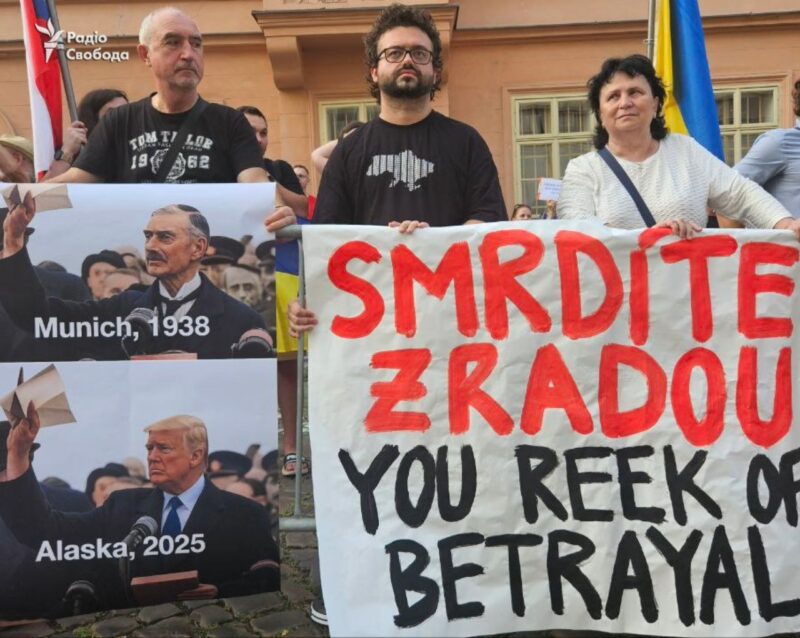
The 1938 Munich Agreement, where Western leaders allowed Nazi Germany to annex parts of Czechoslovakia in exchange for promises of peace, has become a rallying cry for protesters opposing any Ukrainian territorial concessions to Russia.
“Any retreat from Donetsk or Luhansk is not compromise—it is a strategic disaster,” protesters in Prague declared. “It would give Russia a permanent launching pad for future attacks, just as the 1938 Munich Agreement gave Hitler the green light to devour Europe.”
The Ukraine war, now in its fourth year since Russia’s full-scale invasion began in February 2022, has evolved into what officials describe as a broader contest between democratic and authoritarian powers, with North Korean troops fighting alongside Russian forces and Iranian drones striking Ukrainian cities.
White House officials describe today’s meeting as exploratory, with Trump stating he will know “probably in the first two minutes” whether a deal is possible. The president has indicated that successful talks could lead to a follow-up trilateral meeting including Zelenskyy.
However, Putin has shown little willingness to make genuine concessions. Russian forces continue their advance in eastern Ukraine, and Moscow failed to attend previous peace talks in Türkiye despite Ukrainian participation.
As one protester’s sign in Helsinki read: “Today’s leaders must remember that history judges not just intentions, but consequences.”
The summit in Anchorage is expected to conclude this evening, with both leaders potentially making public statements about next steps.
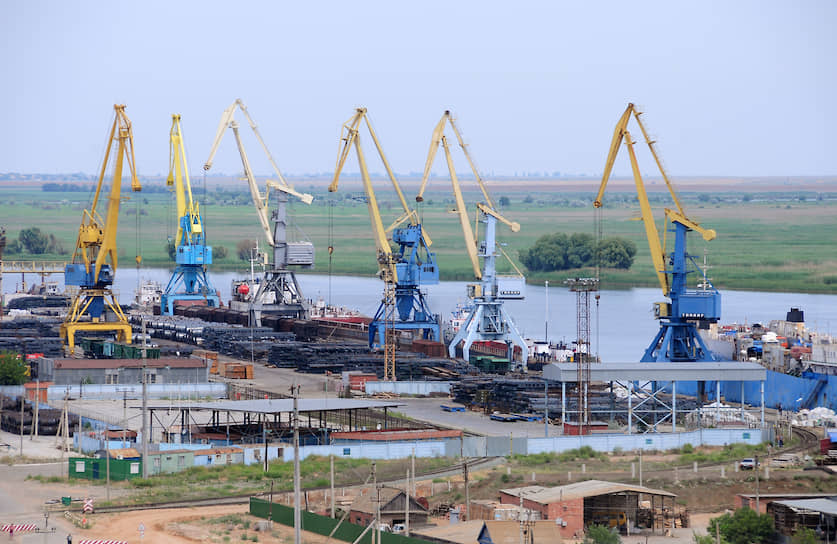
Ukraine’s Special Operations Forces (SSO or SOF) struck Russia’s Olya port in Astrakhan Oblast on 14 August, targeting a vessel reportedly carrying Iranian Shahed drone parts and ammunition. The General Staff of the Armed Forces of Ukraine said the attack was part of efforts to weaken Russia’s ability to carry out airstrikes. Results of the strike are still being assessed.
According to the General Staff, the Olya port facility is used by Russia as an important logistics hub for receiving military goods from Iran.
The targeted vessel, identified as Port Olya 4, was reportedly loaded with Shahed-type drone components and ammunition.
The operation was conducted by Ukraine’s SOF in cooperation with other branches of the Defense Forces. The military said the goal was to disrupt Russian logistics and degrade its capacity for sustained aerial attacks.
No visual evidence from the area has yet emerged, and Euromaidan Press said it could not independently verify the report.
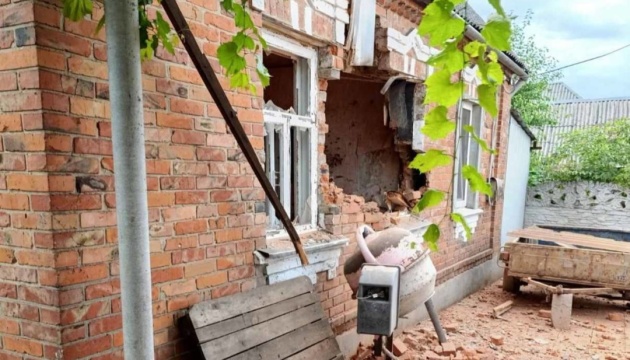
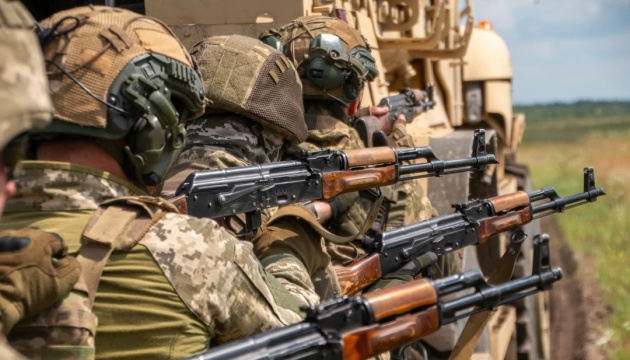
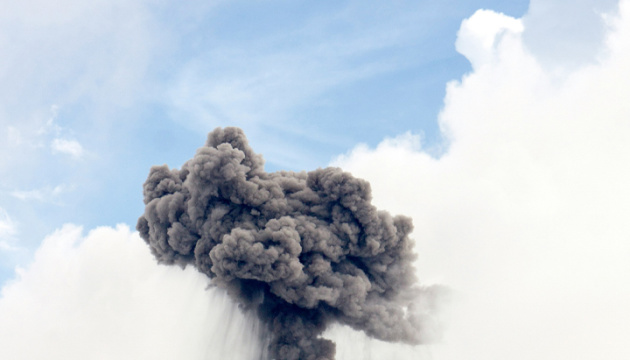
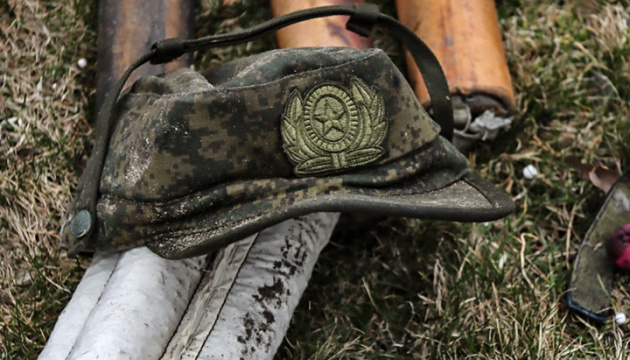
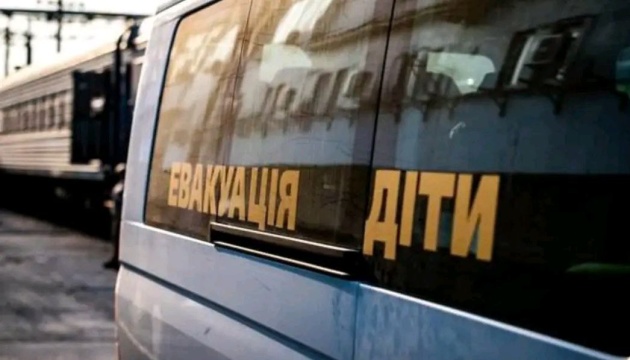
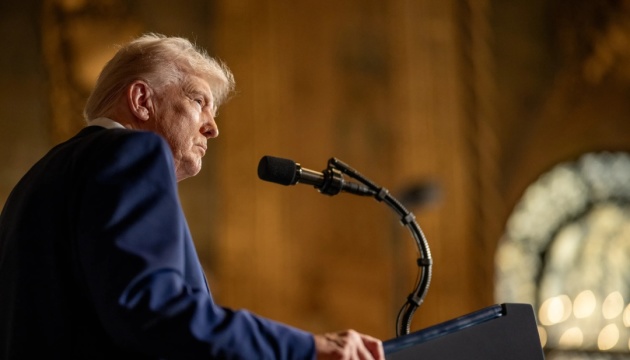

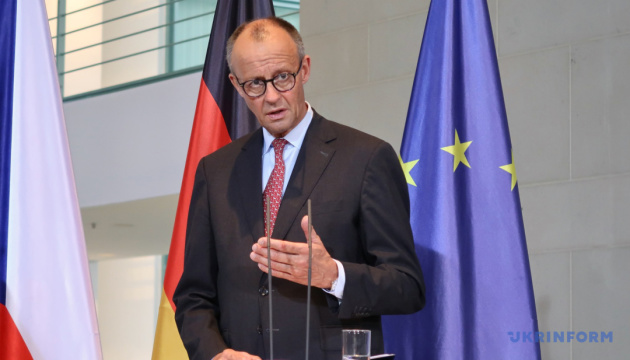
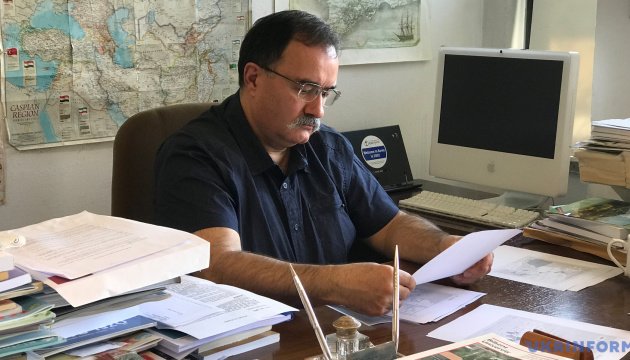
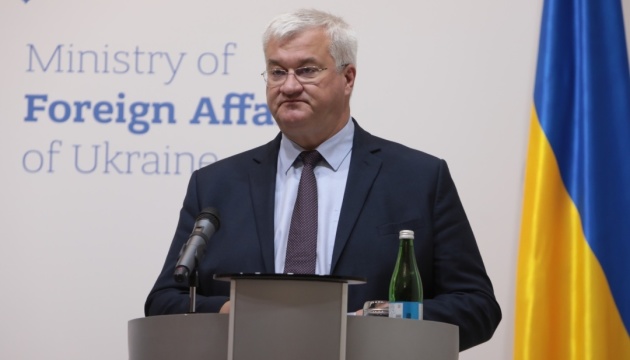
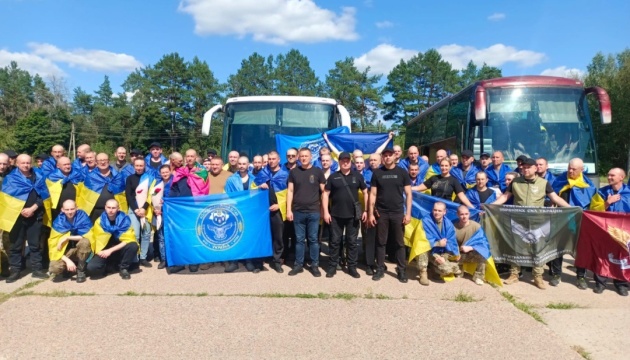
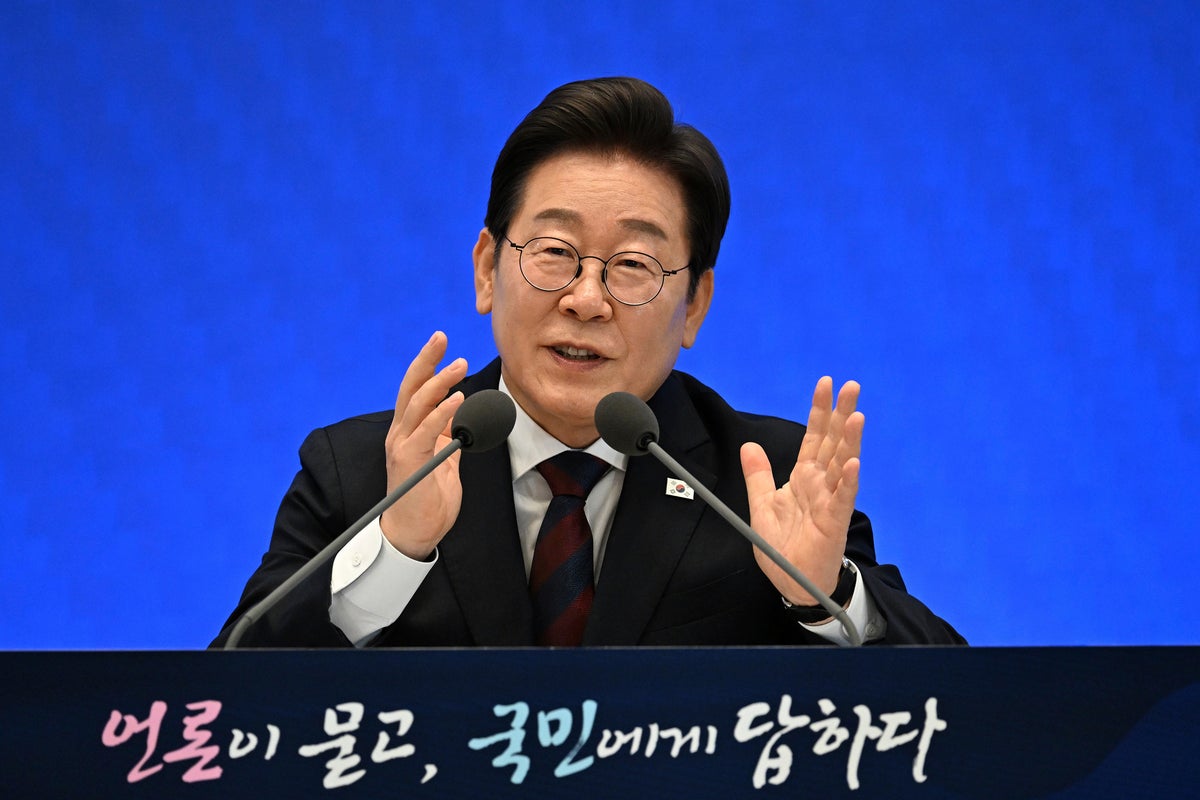
© ASSOCIATED PRESS
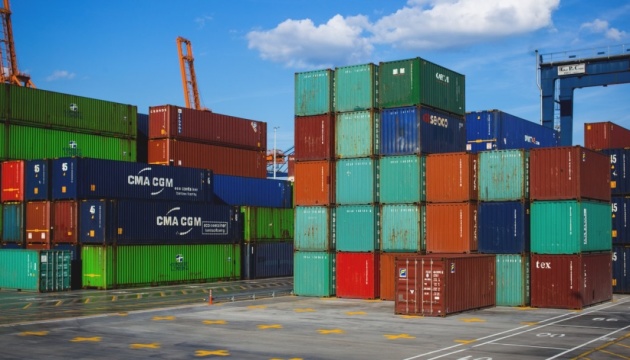
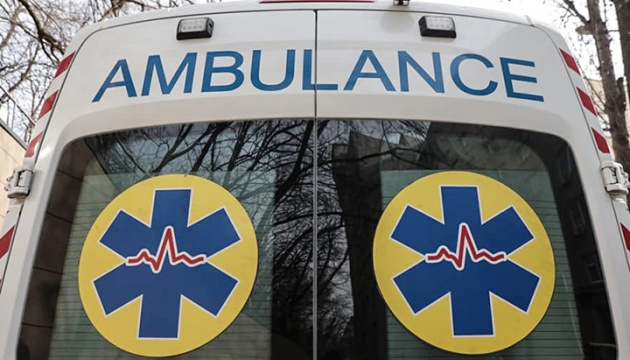

Sir Tony Radakin stressed that ‘Russia is weak’ and that Nato allies needed to demonstrate confidence

© PA